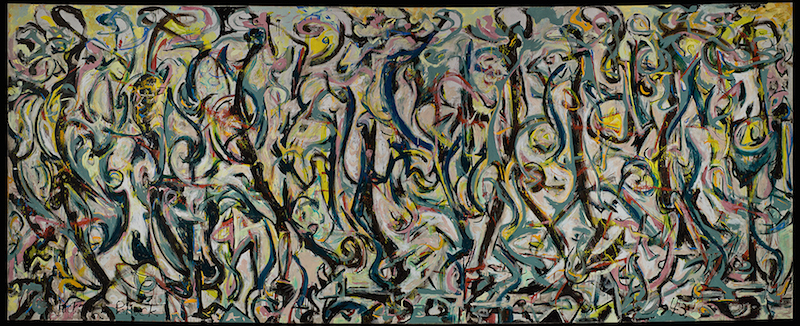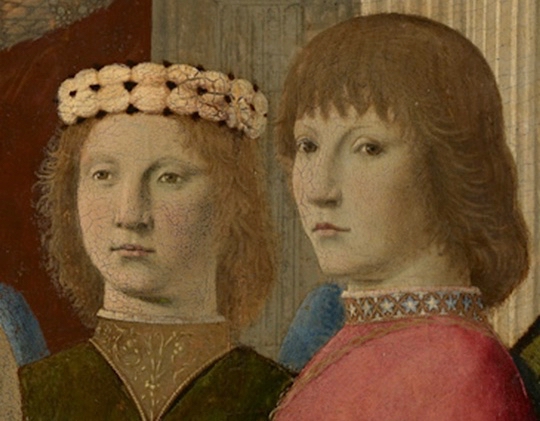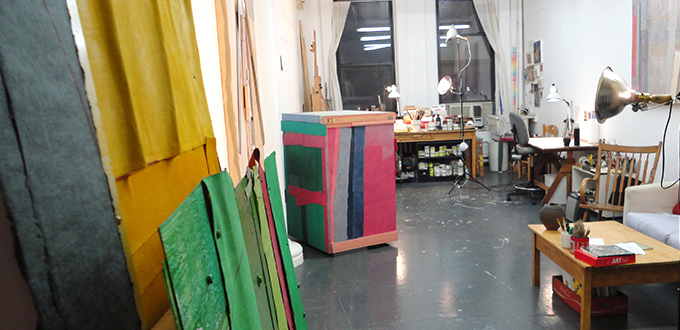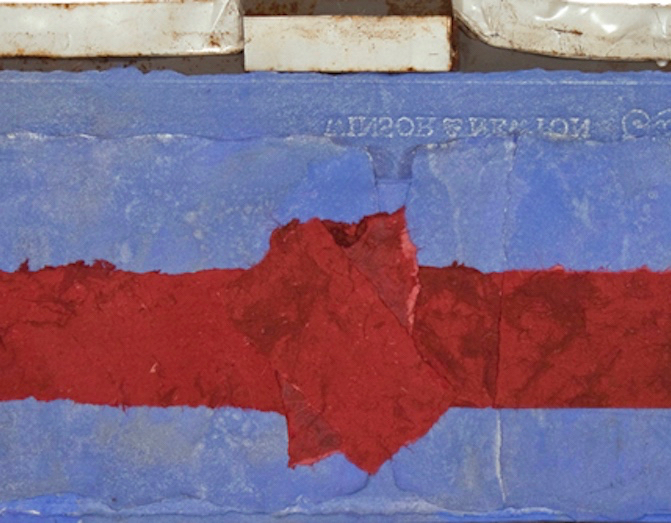
Not long after arriving at the University of Iowa as a freshman with a major in art, I visited the university library to draw out a book. Recalling that moment of entering the library lobby, I had a very strong, unexpected, and truly unprepared-for experience. On the wall behind and above the main desk was a very large, extremely powerful painting that I had no prior knowledge of. That great work of art was Jackson Pollock’s Mural.
This artist’s first encounter with Pollock’s Mural (1943) has continued to remain a part of my thinking and life as an artist, to this day.
I had come to the University of Iowa as an eighteen-year-old from New York City, following a summer of three months in France, Spain, and Italy. Studies at the Art Students League of New York, with Yasuo Kuniyoshi, Arnold Blanch, and Charles Alston were behind me. I was already exhibiting professionally. Blanch, Alston, Philip Guston, and Eugene Ludins had insisted that I go to college – specifically and strenuously, the University of Iowa. Fanny Ganso, of the Ganso Gallery and widow of the artist Emil Ganso, had written a personal letter in my behalf to UI President Orville Hancher. So, with some reluctance, I felt equipped and prepared for whatever was to come at UI. The experience at UI library with Pollock’s Mural changed all that. I was neither equipped or prepared for that great work of art, or the fact of such a work actually being seen – and so democratically being seen – at a university.
For me, with Mural, I was looking at something that had been created that was about art, that was about itself, that could be its own reference. There were no filters. I was taken directly and immediately to the art. Well then… so a work of art could do that! At UI, I had the privilege of studying with superb, involved, and very lucid, reputable and professional artists and art historians: Stuart Edie, Mauricio Lasansky, and Roy Seiber stand out vividly in my mind. Curiously, during those years at UI, very little was ever said or discussed about the Pollock Mural. I believe that as something new in the world, the very freshness of it was still being savored and considered. The world of art, in all of its manifestations, had been changed. What was then possible to artists and their art had all been changed. My artist-profs. Edie and Lasansky clearly understood that and their mentoring generously encouraged the idea of possibility.
Today, in my studio, decades after that initial experience in the UI library, there is always in clear sight, a copy of a book about Jackson Pollock (on a table purchased at a junk store in 1954 in Iowa City). The key work reproduced early in the book is Mural. On a nearby wall is an image of the Chinese thirteenth-century Sung Dynasty painting Six Persimmons, by Mu-Ch’i (which, by the way, I was also singularly overwhelmed by, around the same time as the Pollock. It was the very first image projected onto the screen by Roy Seiber, as introduction to the UI art history survey class).
The early impact of experiencing Jackson Pollock’s Mural at UI remains. It has been a part of every day of my life as an artist.
As a teacher, I am fortunate to have been at the Art Students League of New York for the past fifty years. During those years, I have also taught and lectured at universities, art schools, and museums throughout the United States and abroad. Among my many students have been artists like Ai Weiwei and Gary Hill. Continuously and always, whenever the students are creating their art or when there are conversations, discussions, lectures or forums, I know that the idea of what is, may be, or must be possible to a single artist, is an idea – a reality – that I share the privilege of being able to be able to carry to the individuals in that studio or venue. For me, that is a legacy to be remembered, for them.
The origin, then, of this inspiration and privilege? That was simply a trip to the UI library long ago, and this artist’s first experience of Jackson Pollock’s Mural.
©Bruce Dorfman
This essay will appear in an upcoming volume of the Getty Research Journal dedicated to Jackson Pollock’s Mural. The Getty Research Institute has made available video from its symposium “Jackson Pollock’s Mural: Transition, Context, Afterlife,” which includes scholarly commentary on the painting’s technique, conservation, and historical context.




